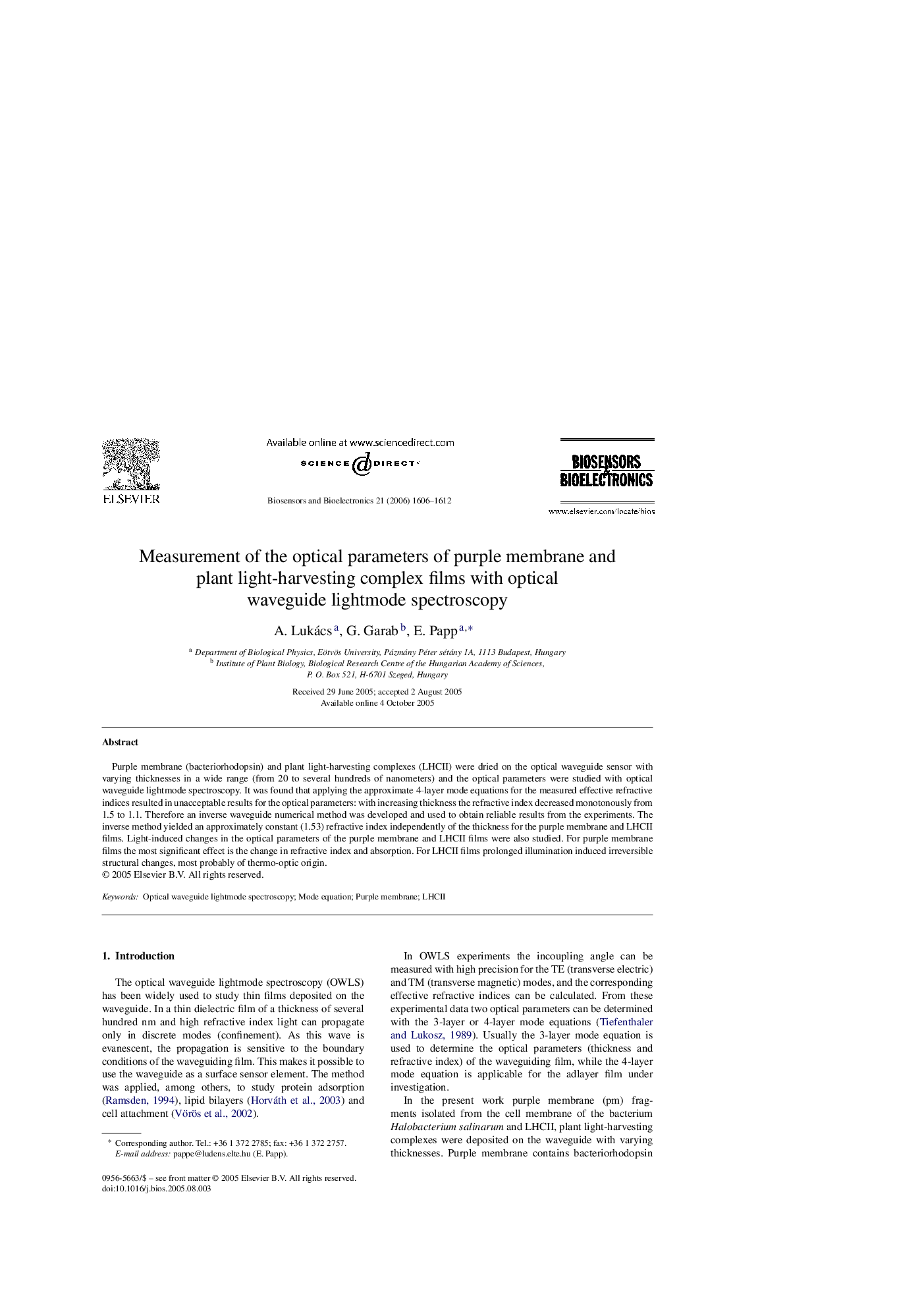| Article ID | Journal | Published Year | Pages | File Type |
|---|---|---|---|---|
| 870062 | Biosensors and Bioelectronics | 2006 | 7 Pages |
Purple membrane (bacteriorhodopsin) and plant light-harvesting complexes (LHCII) were dried on the optical waveguide sensor with varying thicknesses in a wide range (from 20 to several hundreds of nanometers) and the optical parameters were studied with optical waveguide lightmode spectroscopy. It was found that applying the approximate 4-layer mode equations for the measured effective refractive indices resulted in unacceptable results for the optical parameters: with increasing thickness the refractive index decreased monotonously from 1.5 to 1.1. Therefore an inverse waveguide numerical method was developed and used to obtain reliable results from the experiments. The inverse method yielded an approximately constant (1.53) refractive index independently of the thickness for the purple membrane and LHCII films. Light-induced changes in the optical parameters of the purple membrane and LHCII films were also studied. For purple membrane films the most significant effect is the change in refractive index and absorption. For LHCII films prolonged illumination induced irreversible structural changes, most probably of thermo-optic origin.
